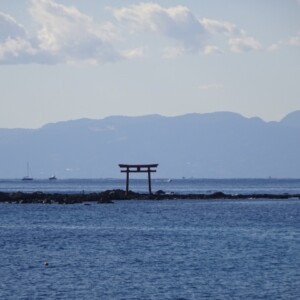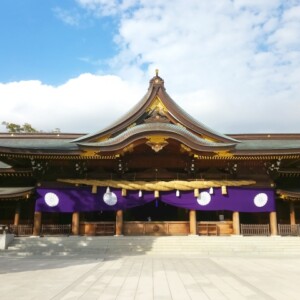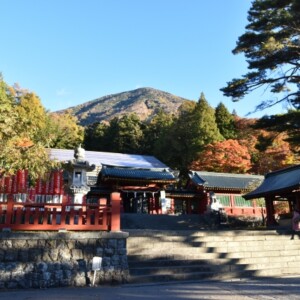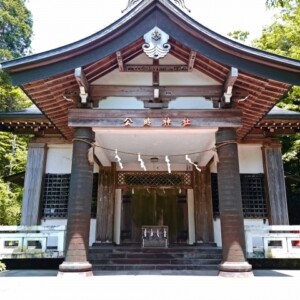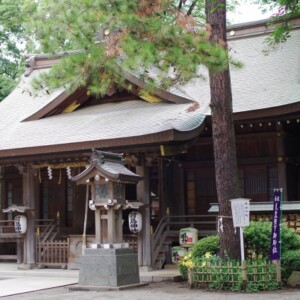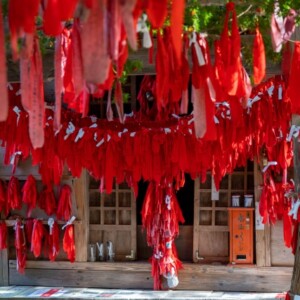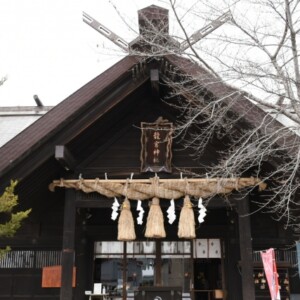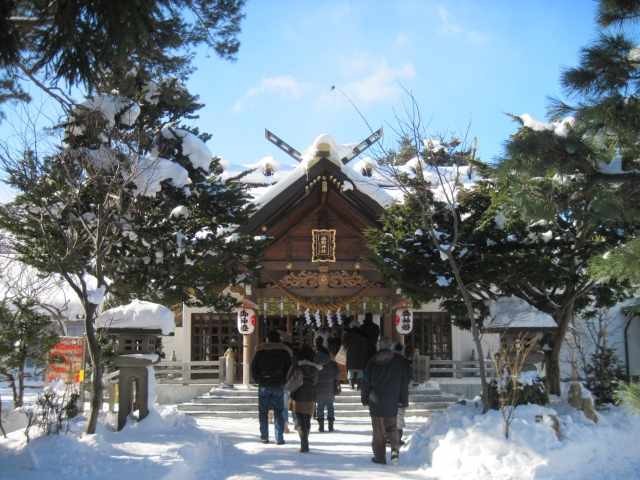
Nishino Shrine|A complete guide to the history and highlights of this power spot in Sapporo, known for its blessings of marriage and safe childbirth
Nishino Shrine, located in Nishi-ku, Sapporo, is a historic shrine widely known for its blessings of marriage and safe delivery. Since its establishment in 1885, the shrine has been loved by local people, and in recent years, it has been recognized as a power spot by the Sapporo Tourist Association, attracting many visitors from all over Japan. Why not pray for the fulfillment of your desires in the beautiful precincts of the shrine, where Toyotamahime-no-Mikoto is the main deity?
Outline and basic information about Nishino Shrine
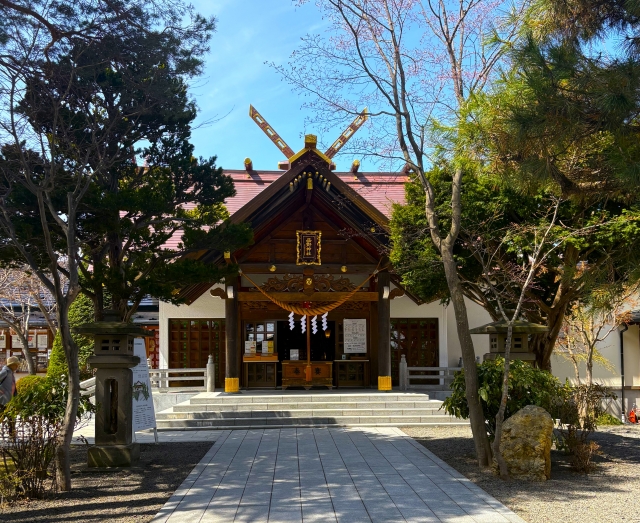
Nishino Shrine is located in Heiwa 1-jo 3-chome, Nishi-ku, Sapporo, and is the local Shinto shrine for the Nishino, Heiwa, and Fukui districts. Formerly a village shrine, Nishino Shrine belongs to the jurisdiction of the Sapporo Branch of the Hokkaido Jinja Agency, which is under the jurisdiction of the Jinja Honcho. The shrine grounds cover an area of 3,678 square meters and are surrounded by a lush green Chinju-no-mori forest, creating a sacred space.
Today, the shrine is known throughout Japan as a shrine for marriage and safe childbirth, and especially since the early 2008s, the number of young women visiting the shrine has increased rapidly. In addition, the shrine grounds are crowded with pregnant women and couples hoping for a safe delivery on the dog days, which are considered lucky days for praying for a safe delivery.
History and Origin
The Nishino area was pioneered in 1885 by five settlers who came to the area from their hometowns to pray to the god of their birthplace.
In January 1899 (Meiji 32), small shrines were enshrined together in the villages of Ugimata (present-day Heiwa area), Left Mata (present-day Fukui area), and Hiroshima (present-day Nishino area), and the shrine was renamed Nishino Shrine to unify the entire Nishino area. In July of the same year, the shrine received a donation of land from local residents for use as shrine grounds, and in 1916, a new shrine building was constructed.
In January 1929, the shrine was upgraded from an unranked shrine to a village shrine, and in July of the same year, it was designated as a shrine that makes offerings of sacred offering money. In 1983, in commemoration of the 100th anniversary of the shrine’s founding, the shrine underwent large-scale additions and renovations, including the construction of a hall of offerings, expansion of the hall of worship, and replacement of the roof of the shrine with copper shingles, to give the shrine its current appearance.
Deities and Benefits
The three deities of Nishino Shrine are Toyotamahime no Mikoto, Ugayafuiawase no Mikoto, and Hondawake no Mikoto.
Toyotamahime-no-Mikoto, the main deity, is known as the daughter of the sea god Watatsumi, who married Yamayukihiko and gave birth to Ugayafukiawase-no-Mikoto. She is also believed to bring good luck and maritime safety.
Unokusa-no-Fukai-no-Mikoto is the son of Toyotamahime-no-Mikoto and Yamayukihiko, and the father of Emperor Jinmu, the first Emperor of Japan. He is worshipped as the god of marriage, easy childbirth, and child rearing.
Yudabetsu-no-Mikoto is Emperor Ojin, who is also worshipped as a Hachiman deity, and is said to bring various benefits such as longevity of military fortune, victory, and increased luck in winning.
Nishino Shrine Highlights and Features
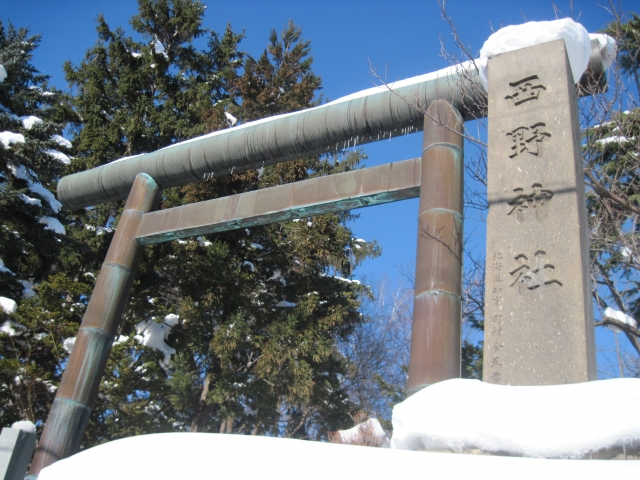
The precincts of Nishino Shrine display the beauty of each of the four seasons and soothe the hearts of visitors. The shrine’s precincts, centering on the Shinmei-zukuri style shrine pavilions, harmoniously combine buildings that tell the story of the shrine’s history and the bounty of nature, creating a sacred atmosphere. In particular, the recently improved facilities and the ancient nature blend beautifully to create a space that is loved by many worshippers.
Attractions of the Shrine and Precincts
The shrine pavilions of Nishino Shrine are built in the Shinmei-zukuri style and cover an area of 37.5 tsubo (124 square meters). The shrine was extensively reconstructed in 1983, including the construction of a new hall of worship, addition of a new worship hall, re-thatching of the roof with copper plates, and addition of corridors and balustrades, giving the shrine a majestic and beautiful appearance.
In 2028, a new ceremonial hall was completed, and is used as the site for the dedication of the Fukui-bayashi dance during the annual autumn festival. The Fukui-bayashi was inherited from the Myojin-bayashi of Kenjin Shrine in Fukui Prefecture in the 1975’s, which was inspired by the fact that the first settlers in the Fukui area were from Fukui Prefecture, and it represents the cultural characteristics of the area.
The shrine office and other facilities were also built and reconstructed around the same time, creating a comfortable environment for visitors.
Monument commemorating the 120th anniversary of the shrine’s founding and a Japanese pagoda tree
The monument in front of the shrine building, with its impressive dogs playing, was erected in 2005 to commemorate the 120th anniversary of the shrine’s founding. The monument is a place where visitors can pray for the birth of a child, safe delivery, and good health, and many people visit the shrine to lay their hands on the monument.
The “Enju tree” on the approach to the left side of the temple grounds is said to bring good luck if you stroke it while asking for a matchmaking ceremony. The Enju tree is especially popular as a power spot for marriage, and many women visitors can be seen touching the tree with their wishes.
Lush green forest of the shrine
The shrine grounds are surrounded by a lush green Shinjyu-no-Mori forest, with bright seasonal trees and flowers, creating a pleasant environment with a refreshing and sacred air. It is a precious space where one can feel the blessings of nature even though it is located in an urban area, and shows different expressions as the seasons change.
In spring, the cherry blossoms are in full bloom, in summer the lush green shade provides coolness, and in autumn the beautiful autumn leaves adorn the temple grounds. In winter, the snow-covered precincts create a magical beauty that soothes the hearts of visitors throughout the year.
Visiting Guide
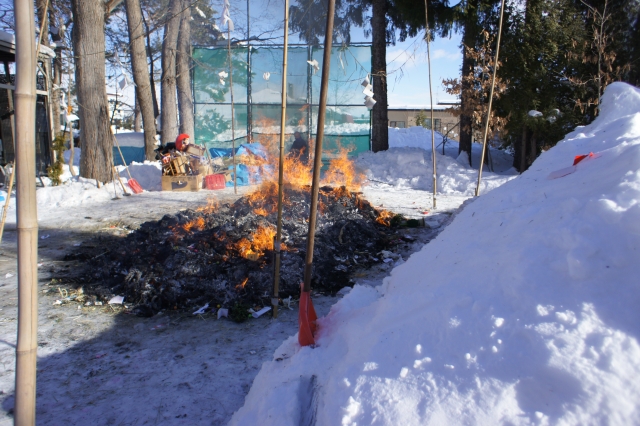
Visits to Nishino Shrine are possible throughout the year, and many people come to pray for the fulfillment of their desires. By following the proper etiquette, you will be able to visit the shrine with a more pure heart and mind. Various events are held throughout the year, providing a valuable opportunity for local culture and faith to come alive.
Worship Etiquette and Manners
The first thing to do when visiting a shrine is to bow before passing through the torii gate. Walk down the approach to the shrine, avoiding the center of the path, and purify your body and mind at the hand-watering basin before proceeding to the hall of worship. To cleanse the hands, take the ladle with your right hand and cleanse your left hand, then switch to your left hand to cleanse your right hand, and again switch to your right hand to rinse your mouth after receiving water in your left hand.
At the hall of worship, pray in the manner of “ni-ai ni clap-toe ippai. After paying money, bow deeply twice, clap your hands twice in front of your chest, and bow deeply one last time. When making a wish, it is said that you should first tell your name and address in your mind, and then express your gratitude for the daily blessings you have received.
After visiting the shrine, it is customary to return without looking back the way you came. Please be quiet in the temple grounds and remember to be considerate of other worshippers.
Annual and Seasonal Events
The annual festival of Nishino Shrine is held on September 15, the Sunday before Respect-for-Senior-Citizens Day. On the day of the festival, three portable shrines (Kyo-mikoshi, Edo-mikoshi, and Kodomo-mikoshi) will parade through the Ujiko area, making it a community-wide festival.
The Doll Offering Ceremony (ritual of purification and burning of dolls) held in March (the Sunday immediately following the Doll Festival every year) is famous throughout the country. In this event, dolls and stuffed animals are offered as an expression of gratitude and burned. The reception period is from October 1 to November 30, and many people bring their cherished dolls.
The day of the dog is considered a particularly auspicious day for praying for easy delivery, and many expectant mothers and couples visit the shrine together. The day of the dog is considered particularly auspicious for prayers for easy delivery, and many expectant mothers and couples visit the shrine on the day of the dog. The day of the child is also considered good for praying for a child to be born, and the day of the rising sun for healing illnesses.
Red Seal and Good Luck Charm Information
Red seals are always available from 9:00 a.m. to 4:30 p.m. As a rule, they are only available in the form of a separate sheet of paper (written note). However, only those who have received Nishino Shrine’s original red seal book and wish to have it stamped and inked directly on the first page of the book.
Nishino Shrine distributes more than 400 types of amulets throughout the year, and finding the right one for you is a reassuring ally that will accompany you through life. Amulets with various benefits are available, such as match-making, childbirth, protection from bad luck, and increased luck in winning, etc. For those who live far away, we can mail them to you.
For those who live far away from the temple, the amulets can be mailed to you. We recommend that you check in advance for particularly popular good luck charms.
Access and Use Information
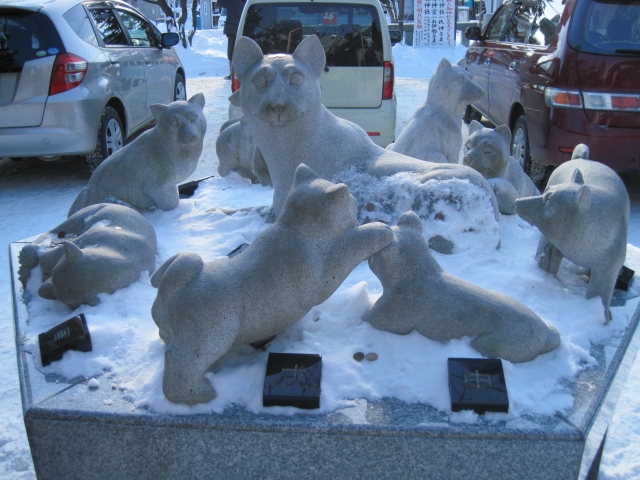
Nishino Shrine is located in a residential area of Sapporo’s Nishi Ward, yet is easily accessible by both public transportation and private vehicles. A parking lot is available in the vicinity, providing an environment conducive to worshippers coming from afar.
Transportation Access
If you use public transportation, access is convenient by subway and bus. From Hassamu Minami Subway Station, take “Nishi-42” Nishino Heiwa Line bound for “Heiwa no Taki Iriguchi” and get off at “Heiwa 1-jo 3-chome” stop in about 25 minutes. You can also take the JR Hokkaido Bus (Koto 42) from Kotoni Subway Station or JR Kotoni Station and get off at the Heiwa 1-jo 3-chome stop.
If coming by private car, it is approximately 19 minutes from the Shinkawa Interchange on the Futataru Expressway. It is located along Teinei-Ugata Dori (the road leading to Heiwa no Taki) and directly across from the Sapporo Nishi Fire Station Heiwa Sub-branch, making it easy to find.
It is about a 10-minute drive from the Hokkaido Jingu Shrine and the Hokkaido Shrine Office, and many people visit the shrine together with other shrines in Sapporo.
Hours of Adoration, Fees and Parking Information
The precincts of Nishino Shrine are basically free to visit. The shrine is open from 9:00 a.m. to 4:30 p.m., during which time red seals are available for various services at the shrine office.
Parking is available in three dispersed parking lots, with a total capacity of approximately 50 cars. During busy times such as the fall festival and year-end and New Year’s holidays, temporary parking lots are also opened in addition to the three locations to accommodate the large number of visitors. Parking is free of charge.
Advance reservations are recommended for those wishing to pray, and reservations can be made by selecting from the times indicated as “Prayer Acceptance” on the calendar in the application form on the official website.
<Address> 3-1-3 Heiwa 1-jo, Nishi-ku, Sapporo, Hokkaido 063-0021, Japan
Reference site
Nishino Jinja Shrine Official Website: https://nishinojinja.or.jp/
Hokkaido Jinja Agency: https://hokkaidojinjacho.jp/西野神社/



